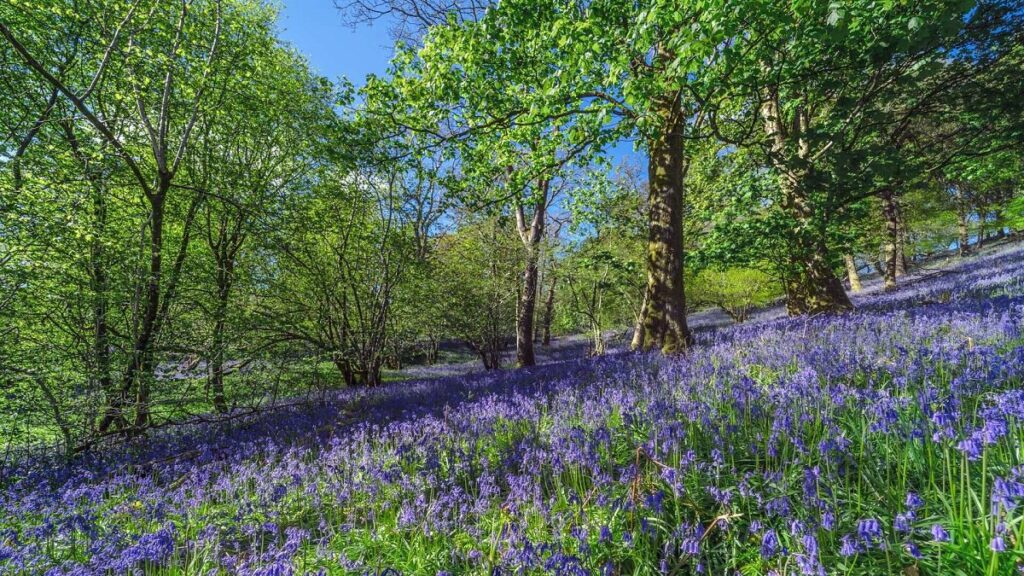Feeling stressed? Try flowers.
Experts have long said that exposure to nature can improve our well-being. Studies have backed up the power of ecopsychology, showing how even brief moments in the wild – from a stroll in a city park to a pilgrimage to view bluebells – can boost your mood, help you to feel more focused and empathetic, and even lower blood pressure.
Whether it’s the scent of lilies, the calming hues of hanging wisteria or the simple pleasure of spotting the season’s first poppies, floral blooms are good for you.
And spring in Europe might just be the best time and place to experience them.
Step into a living painting in Monet’s garden
In France, the small village of Giverny is a must for anyone who has ever wanted to step into a painting. Claude Monet designed his now-famous garden in 1883 as a living canvas that he could return to year after year. Even 150 years later, it is still full of life.
In spring, Monet’s garden bursts with the poppies, peonies and irises he immortalised in his Impressionist works. At the centre of it all is the lily pond, complete with the wisteria-covered Japanese bridge – in full bloom in May – that features in his most iconic works.
Run by the Fondation Claude Monet, the garden opens from 1 April to 1 November. Peak blooms arrive from April through June, but this is one place you can visit in any season to reconnect with nature.
Tulip mania blooms in the Netherlands
About 40 kilometres southwest of Amsterdam, the Keukenhof gardens are a spectacle of spring colour and one of Europe’s most famous floral destinations.
Developed as a giant floral display in 1949, the park showcases about seven million flowering bulbs across 32 hectares, including more than 800 varieties of tulips – the country’s most famous flower – alongside daffodils, orchids, hyacinths and lilies.
The gardens open from just March to mid-May each year. If you fear missing out on an essential windmill-and-tulip photo, note that Keukenhof publishes a fieldreport on which flowers are in bloom. Currently, you can witness late-flowering tulips, alliums and irises.
Tuscany’s poppies set the hills on fire
As Italy emerges from winter, Tuscany puts on its own natural show.
From April to May, wild poppies pop up between rows of vines and fields of cypress trees, painting the countryside in vivid red. The flowers prefer warm, dry places, which makes the UNESCO World Heritage Site of Val D’Orcia a prime spot to find them – ideally with a picnic under a blue spring sky.
Tuscany is home to several excellent hiking routes that take in fields of wheat, lush forests and medieval towns. For an unforgettable hike, you can set off on sections of the Via Francigena, an ancient pilgrimage trail that stretches from Canterbury to Rome.
Scotland and England’s bluebell woods are nature’s reset button
In central Scotland, the Glen Finglas estate in the Trossachs National Park is one of the UK’s most biodiverse areas and a brilliant place to catch the first bluebells of the season.
Managed by the Woodland Trust, this vast landscape of ancient forest, lochs and upland trails bursts to life in spring. Bluebells carpet the woodlands by early May, with rare orchids and mosses appearing later in the season. Hikers can follow several trails, but the 27-kilometre Mell Circuit offers some of the best floral vistas and hilltop views.
For an easier escape, try Richmond Park’s Isabella Plantation. A little southwest of Wimbledon in London, this enclosed woodland garden becomes a riot of colour each April and May, when its pedestrian-only Bluebell Walk opens.
Slightly further afield, Kent’s Hole Park Gardens offers an annual “bluebell spectacular,” complete with abluebell barometer keeping you informed of the colours you can expect.
Read the full article here







